Description
International Economics Theory and Policy Krugman 10th Edition Test Bank
International Economics Theory and Policy Krugman Obstfeld 10th Edition Test Bank
***THIS IS NOT THE ACTUAL BOOK. YOU ARE BUYING the Test Bank in e-version of the following book***
Name: International Economics Theory and Policy
Author: Krugman Obstfeld
Edition: 10th
ISBN-10: 0133423646
Type: Test Bank
– The test bank is what most professors use an a reference when making exams for their students, which means there’s a very high chance that you will see a very similar, if not exact the exact, question in the test!
– The file is either in .doc, .padf, excel, or zipped in the package and can easily be read on PCs and Macs.
– Delivery is INSTANT. You can download the files IMMEDIATELY once payment is done.
If you have any questions, please feel free to contact us. Our response is the fastest. All questions will always be answered in 6 hours., most of the time within 30mins
We also faced similar difficulities when we were students, and we understand how you feel.
But now, with the International Economics Theory and Policy Test Bank, you will be able to
* Anticipate the type of the questions that will appear in your exam.
* Reduces the hassle and stress of your student life.
* Improve your studying and also get a better grade!
* Get prepared for examination questions.
*Can save you time and help you understand the material.
This is the quality of service we are providing and we hope to be your helper.
Delivery is in the next moment. Test Bank is accurate.
Prepare to receive your International Economics Theory and Policy Test Bank in the next moment.
If you have any questions, or would like a receive a sample chapter before your purchase, please contact us at inquiry@testbankcorp.com
International Economics Theory and Policy Test Bank
International Economics Theory and Policy Krugman Obstfeld 10th Edition Test Bank ISBN: 0133423646
International Economics, 10e (Krugman/Obstfeld/Melitz)
Chapter 4 Specific Factors and Income Distribution
4.1 The Specific Factors Model
1) The Ricardian model of international trade demonstrates that trade can be mutually beneficial. Why, then, do governments restrict imports of some goods?
A) Trade can have substantial effects on a country’s distribution of income.
B) The Ricardian model is often incorrect in its prediction that trade can be mutually beneficial.
C) Import restrictions are the result of trade wars between hostile countries.
D) Imports are only restricted when foreign-made goods do not meet domestic standards of quality.
E) Restrictions on imports are intended to benefit domestic consumers.
Answer: A
Page Ref: 50
Difficulty: Easy
2) The Ricardian two-country two-good model predicts that there are potential benefits from trade, but NOT
A) the effect of trade on income distribution.
B) the mechanism that determines which country will specialize in which good.
C) when one country has an absolute advantage in the production of both goods.
D) when one country has significantly lower wages than the other country.
E) when both countries have the same types of technology available.
Answer: A
Page Ref: 50
Difficulty: Easy
3) International trade can have important effects on the distribution of income because
A) some resources are immobile in the short run.
B) of government corruption.
C) the more powerful country dictates the terms of trade.
D) rich countries take advantage of poor countries.
E) different countries use different currencies.
Answer: A
Page Ref: 50
Difficulty: Easy
4) The Ricardian model of international trade demonstrates that trade can be mutually beneficial. Why, then, do governments restrict imports of some goods?
A) Trade can have significant harmful effects on some segments of a country’s economy.
B) The Ricardian model is often incorrect in its prediction that trade can be mutually beneficial.
C) Import restrictions are the result of trade wars between hostile countries.
D) Imports are only restricted when foreign-made goods do not meet domestic standards of quality.
E) Restrictions on imports can have significant beneficial effects on domestic consumers.
Answer: A
Page Ref: 50
Difficulty: Easy
5) International trade can have important effects on the distribution of income because
A) different industries employ different factors of production.
B) of government corruption.
C) the more powerful country dictates the terms of trade.
D) rich countries take advantage of poor countries.
E) different countries use different currencies.
Answer: A
Page Ref: 50
Difficulty: Easy
6) Japan’s trade policies with regard to rice reflect the fact that
A) japanese rice farmers have significant political power.
B) Japan has a comparative advantage in rice production and therefore exports most of its rice crop.
C) there would be no gains from trade available to Japan if it engaged in free trade in rice.
D) there are gains from trade that Japan captures by engaging in free trade in rice.
E) Japan imports most of the rice consumed in the country.
Answer: A
Page Ref: 51
Difficulty: Easy
7) The specific factors model was developed by
A) Paul Samuelson and Ronald Jones.
B) Adam Smith and David Ricardo.
C) Richard Nixon and Robert Kennedy.
D) C.B. deMille and Gordon Willis.
E) Bill Clinton and Monica Lewinsky.
Answer: A
Page Ref: 51
Difficulty: Easy
8) In the specific factors model, labor is defined as a(an)
A) mobile factor.
B) specific factor.
C) fixed factor.
D) variable factor.
E) intensive factor.
Answer: A
Page Ref: 52
Difficulty: Easy
9) In the specific factors model, which of the following is treated as a specific factor?
A) land
B) labor
C) cloth
D) food
E) technology
Answer: A
Page Ref: 52
Difficulty: Easy
10) In the specific factors model, which of the following is treated as a specific factor?
A) capital
B) labor
C) cloth
D) food
E) technology
Answer: A
Page Ref: 52
Difficulty: Easy
11) A factor of production that cannot be used outside of a particular sector of an economy is a(an)
A) specific factor.
B) mobile factor.
C) variable factor.
D) import-competing factor.
E) export-competing factor.
Answer: A
Page Ref: 52
Difficulty: Easy
12) A factor of production that can be used in any sector of an economy is a(an)
A) mobile factor.
B) specific factor.
C) variable factor.
D) import-competing factor.
E) export-competing factor.
Answer: A
Page Ref: 52
Difficulty: Easy
13) The specific factors model assumes that there are ________ goods and ________ factor(s) of production.
A) two; three
B) two; two
C) two; one
D) three; two
E) four; three
Answer: A
Page Ref: 52
Difficulty: Easy
14) The degree of a factor’s specificity is directly related to
A) the amount of time required to redeploy the factor to a different industry.
B) the cost of the factor as a proportion of the long-run total cost of production.
C) the mobility of the factor, with more mobile factors having more specificity.
D) technology differences between two countries, with a more advanced technology resulting in more factor specificity.
E) factor quality, with higher quality factors having a higher level of specificity.
Answer: A
Page Ref: 52
Difficulty: Easy
15) The degree of a factor’s specificity is inversely related to
A) the mobility of the factor, with more mobile factors having less specificity.
B) the amount of time required to redeploy the factor to a different industry.
C) the cost of the factor as a proportion of the long-run total cost of production.
D) technology differences between two countries, with a less advanced technology resulting in less factor specificity.
E) factor quality, with lower quality factors having a lower level of specificity.
Answer: A
Page Ref: 52
Difficulty: Easy
16) A worker who has invested in ________ skills will be ________ mobile than would otherwise be the case.
A) occupation-specific; less
B) occupation-specific; more
C) ethical; less
D) ethical; more
E) occupation-nominal; less
Answer: A
Page Ref: 52
Difficulty: Easy
17) In the specific factors model, a country’s production possibility frontier is ________ because of ________.
A) a straight line; diminishing marginal returns
B) a curved line; diminishing marginal returns
C) a straight line; constant marginal returns
D) a curved line; constant marginal returns
E) a curved line; a limited supply of labor
Answer: B
Page Ref: 56
Difficulty: Easy
18) In the specific factors model, a country’s production function is ________ because of ________.
A) a straight line; diminishing marginal returns
B) a curved line; diminishing marginal returns
C) a straight line; constant marginal returns
D) a curved line; constant marginal returns
E) a curved line; a limited supply of labor
Answer: B
Page Ref: 56
Difficulty: Easy
19) In the four-quadrant diagram of the specific factors model, the graph in the upper right quadrant is a country’s
A) production possibility frontier.
B) labor allocation constraint.
C) production function for food.
D) production function for cloth.
E) labor supply curve.
Answer: A
Page Ref: 56
Difficulty: Easy
20) In the four-quadrant diagram of the specific factors model, the graph in the lower right quadrant is a country’s
A) production function for cloth.
B) production possibility frontier.
C) labor allocation constraint.
D) production function for food.
E) labor supply curve.
Answer: A
Page Ref: 56
Difficulty: Easy
21) In the four-quadrant diagram of the specific factors model, the graph in the upper left quadrant is a country’s
A) production function for food.
B) production possibility frontier.
C) labor allocation constraint.
D) production function for cloth.
E) labor supply curve.
Answer: A
Page Ref: 56
Difficulty: Easy
22) In the four-quadrant diagram of the specific factors model, the graph in the upper right quadrant is a country’s
A) labor allocation constraint.
B) production possibility frontier.
C) production function for food.
D) production function for cloth.
E) labor supply curve.
Answer: B
Page Ref: 56
Difficulty: Easy
23) The slope of a country’s production possibility frontier with cloth measured on the horizontal and food measured on the vertical axis in the specific factors model is equal to ________ and it ________ as more cloth is produced.
A) -MPLF/MPLC; becomes steeper
B) -MPLF/MPLC; becomes flatter
C) -MPLF/MPLC; is constant
D) -MPLC/MPLF; becomes steeper
E) -MPLC/MPLF; is constant
Answer: A
Page Ref: 56
Difficulty: Easy

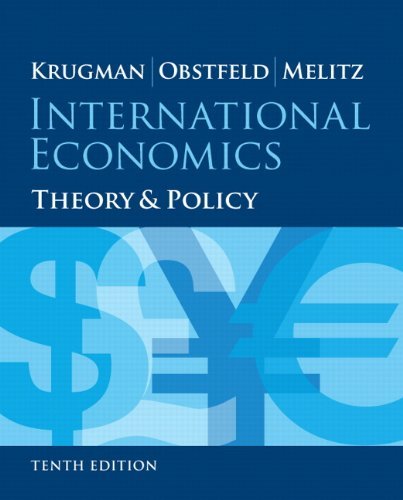
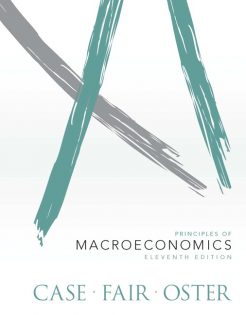
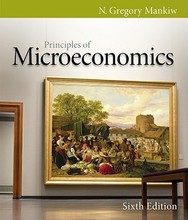
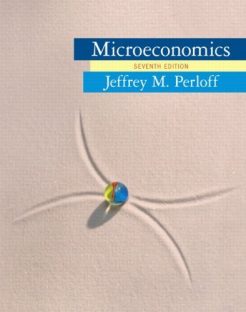
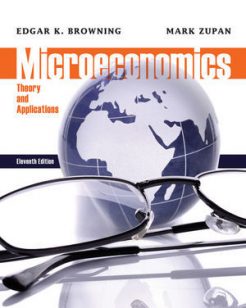

Reviews
There are no reviews yet.